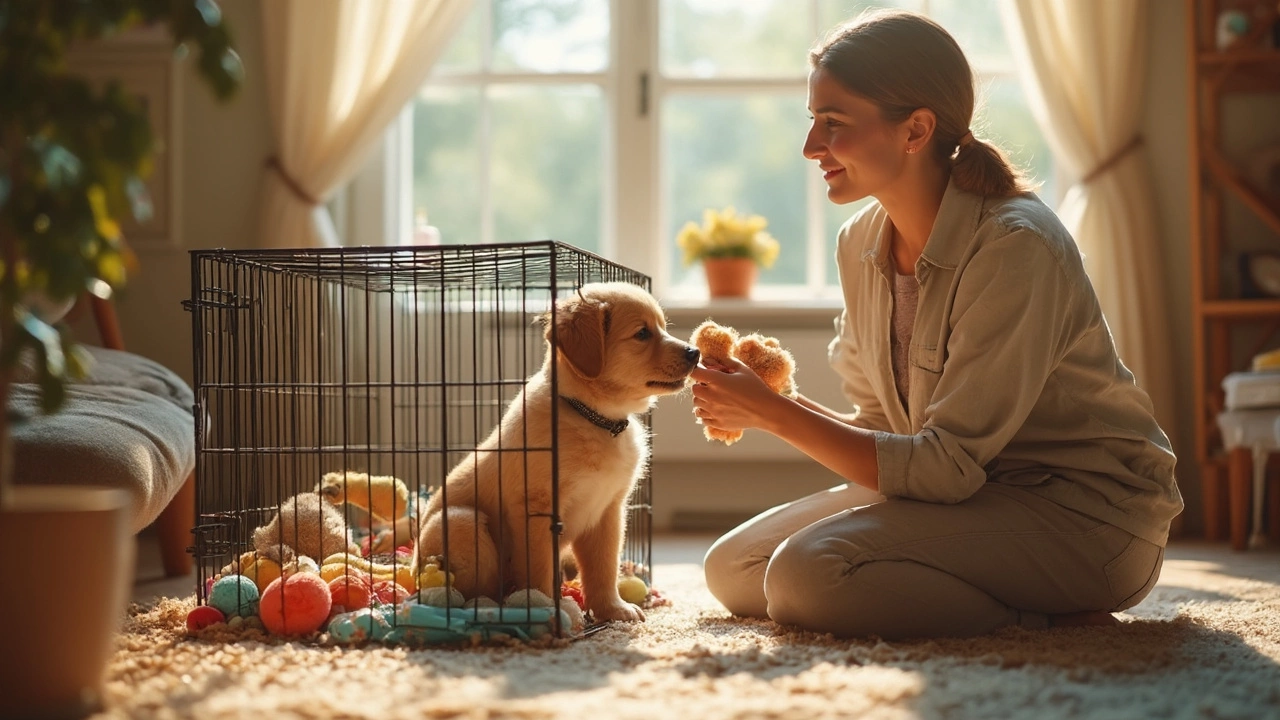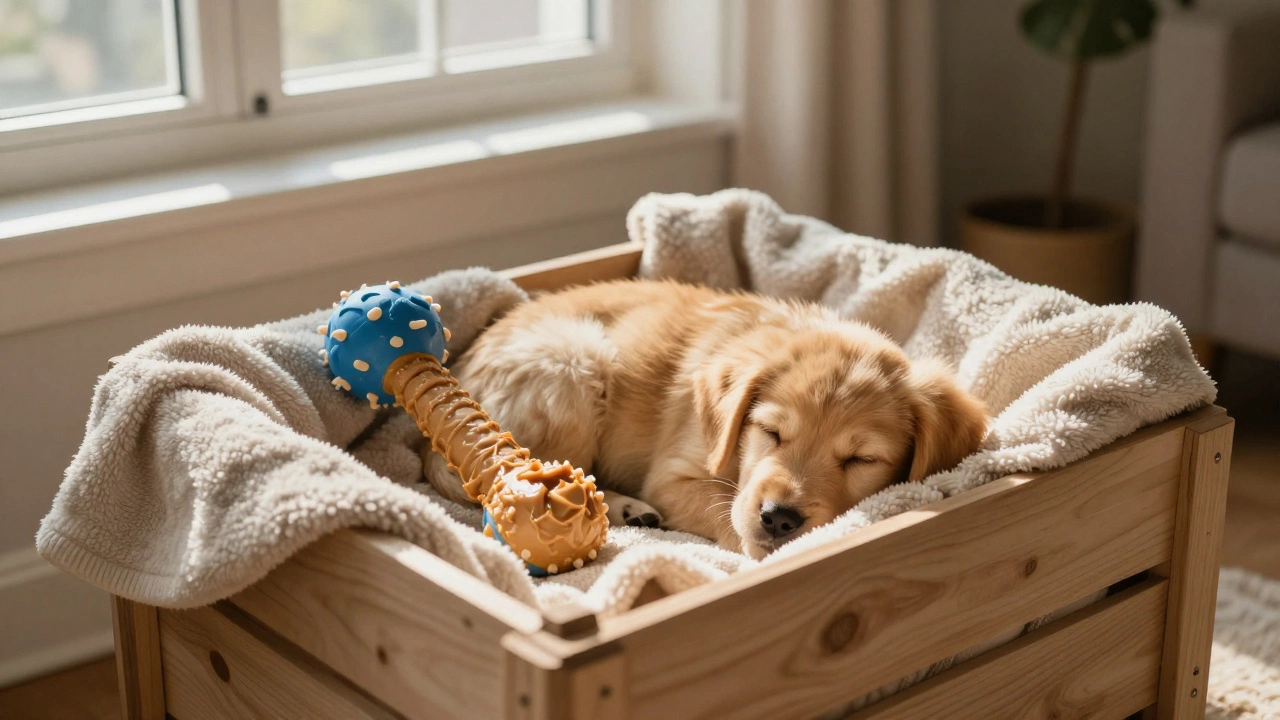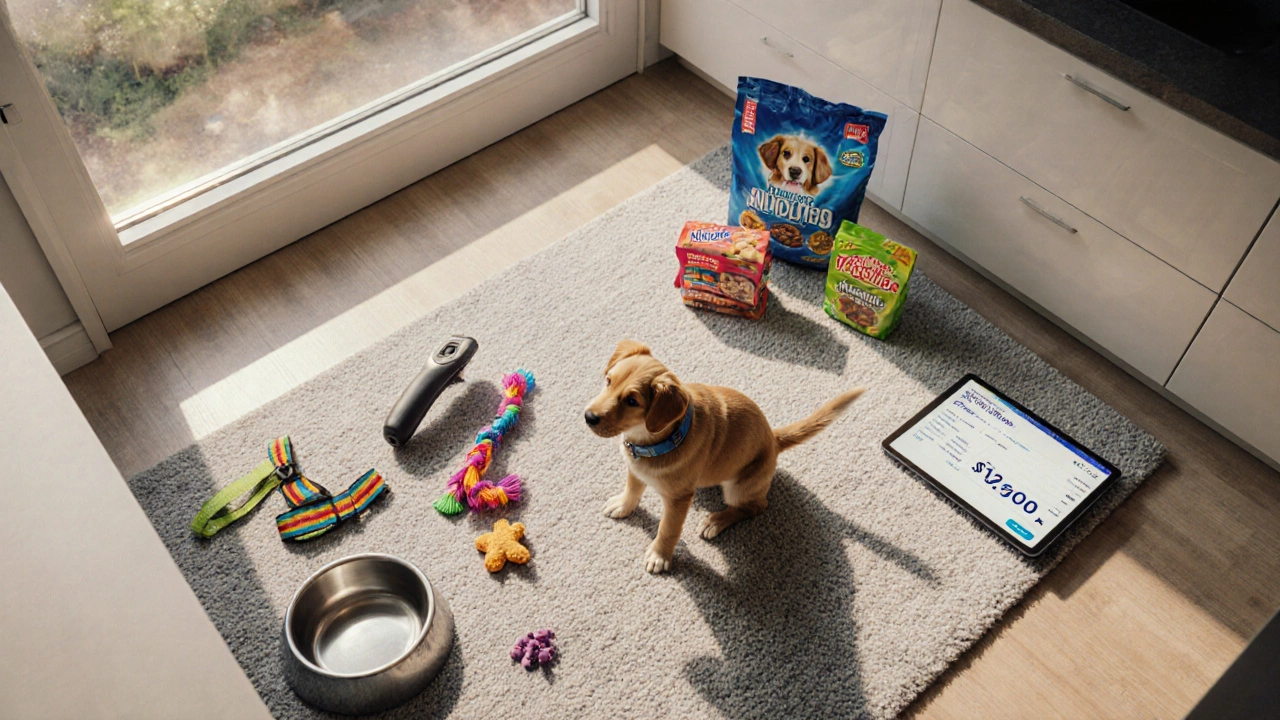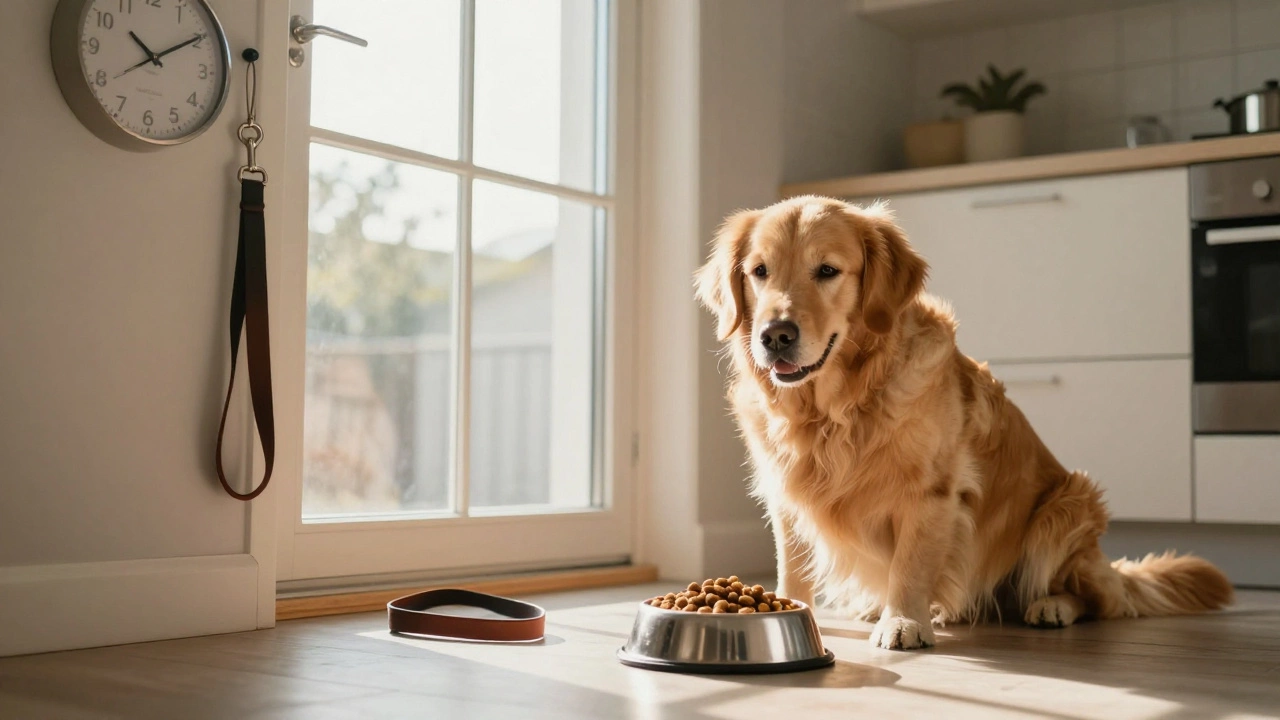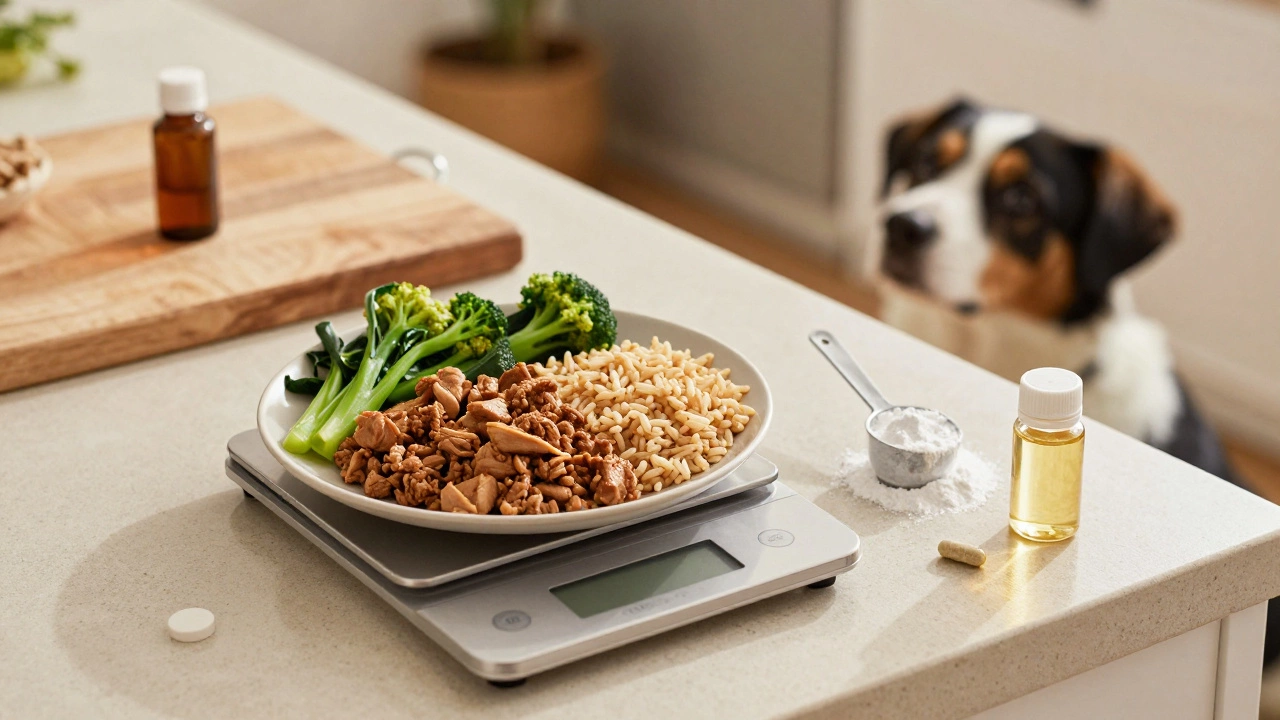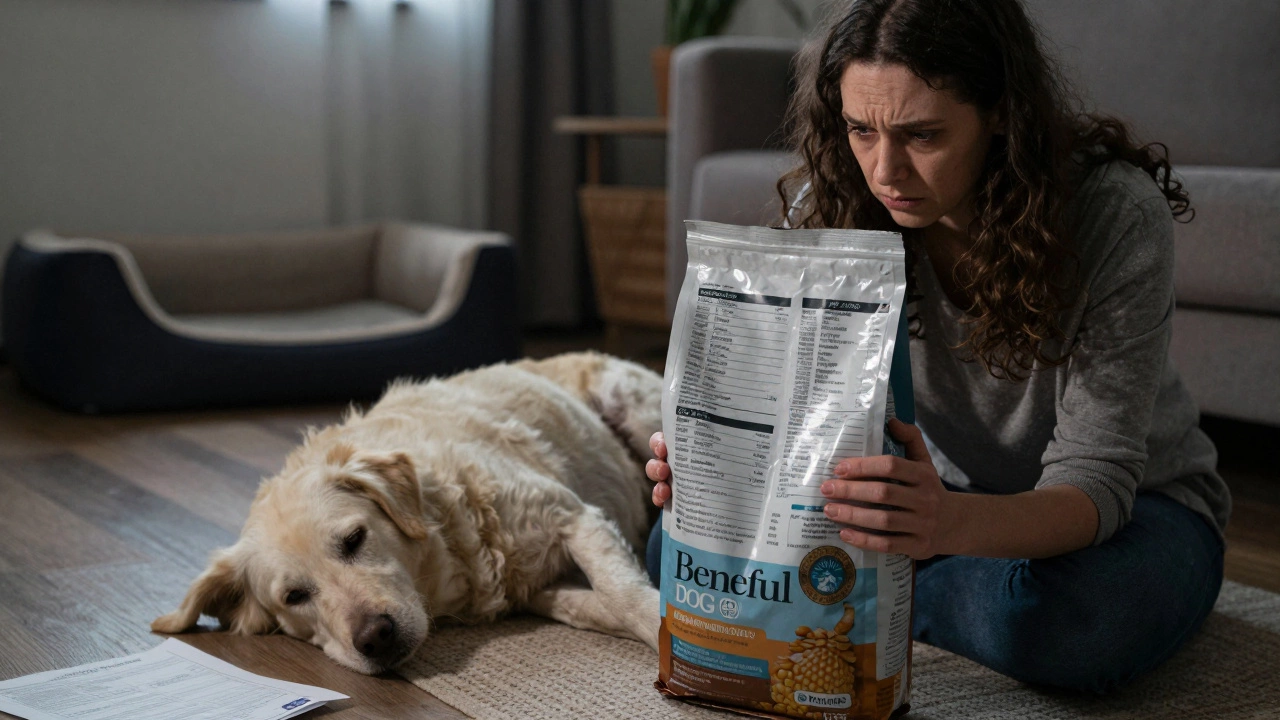Picture this: you walk in and your puppy’s looking up at you with those big eyes behind crate bars. How long is too long for them to be in there? Most folks have heard a number or two, but the real answer depends on your pup’s age, energy, and patience. For puppies under six months, even a couple of hours can feel like forever. Go past four hours too often, and you’ll see boredom, barking, and maybe even some bathroom accidents.
If you’re balancing work, errands, and puppy playtime, figuring this out matters. The right schedule can mean the difference between a calm, happy pup and a stressed-out chewer. Don’t just guess it—there’s actual science behind how long those tiny bladders last, and it changes every month your puppy grows.
- Crate Time Guidelines by Age
- Signs Your Puppy Needs a Break
- The Role of Toys in the Crate
- Tips for Making Crate Time Positive
- Common Mistakes and How to Avoid Them
Crate Time Guidelines by Age
One of the first questions every new dog owner asks: “How long can I actually leave my puppy in there?” It all starts with age. Puppies simply can’t hold it for very long—the younger they are, the quicker you’ll need to take them out.
Here’s a quick rule folks use: add one to your puppy’s age in months, and that’s about how many hours they can stay in the crate at a stretch. So, a two-month-old = two to three hours max. A four-month-old usually handles up to four hours. Don't push past that if you want to avoid accidents and puppy stress.
- Puppy crate training for 8–10 week olds: These tiny pups need bathroom breaks every two hours. Even overnight, expect to wake up once or twice.
- 11–14 weeks: Three hours is about right before they need out.
- 15–16 weeks: Four hours gets easier as their bladder control improves.
- Six months and older: Four to six hours during the day is ok, but keep it shorter if possible. Overnight can stretch a bit longer if needed—but always let your dog out first thing in the morning.
Remember, just because your dog can physically stay in a crate doesn’t mean it’s good for their mood. Mental breaks, short training sessions, and play matter just as much as bathroom breaks. More crate isn’t better—it’s just easier for us. Your goal: balance your day so your puppy gets plenty of fun and freedom.
Signs Your Puppy Needs a Break
Puppies can't tell you directly when they've had enough crate time, but their actions speak louder than words. You'll usually spot some classic moves when they've hit their limit. Missing these signs can lead to stress, accidents, and a puppy that grows to hate their crate.
- Whining or Barking that’s persistent and not settling down after a few minutes.
- Scratching or biting at the crate door and sides, way past simple squirming.
- Pacing or digging inside the crate, often paired with heavy panting—even if the room isn’t hot.
- Bathroom accidents in the crate, especially if your puppy usually waits until outside.
- Chewing on bedding or toys in a frantic way, not gentle nibbling.
- Licking their paws or crate bars over and over, a common sign of stress.
Pay attention to patterns. If your puppy starts doing any of these within a short time of being crated, that’s your sign to cut down on crate sessions or make them shorter. Don't chalk it up to being "just naughty"—your pup is actually telling you they're uncomfortable.
Here's a quick look at how long the average puppy can hold their bladder by age, because bathroom-related fussing is one of the biggest red flags:
| Puppy Age | Max Hours in Crate (Day) | Bladder Capacity (Avg. Hours) |
|---|---|---|
| 8 weeks | 2 hours | 2 hours |
| 12 weeks | 3 hours | 3 hours |
| 16 weeks | 4 hours | 4 hours |
| 6+ months | 4-5 hours | 5 hours |
When you spot these signals, give your puppy a break for a bathroom trip, a play session, or just some lap time. Your puppy’s crate should be a cozy spot, not a doggy jail. Remember, happy puppies make crate training way easier for everyone.
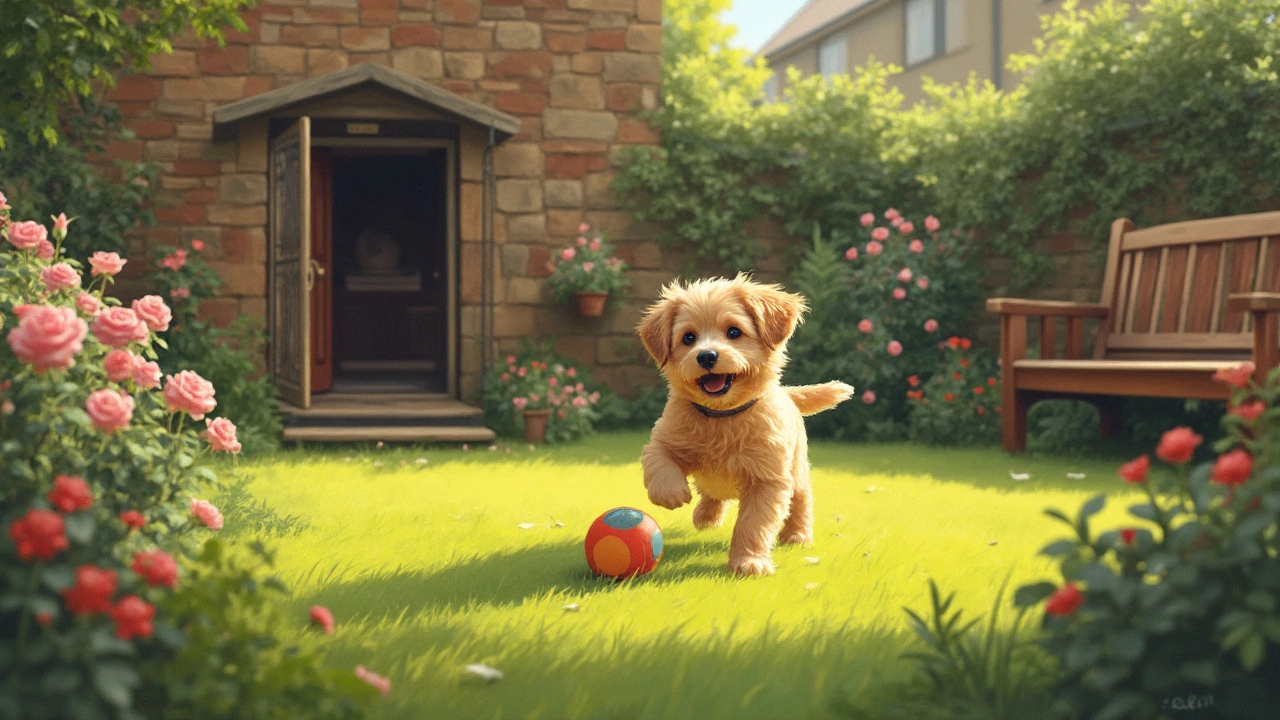
The Role of Toys in the Crate
Toys aren’t just cute extras for your dog’s crate—they’re must-haves if you want crate time to actually work. When puppies are left alone and bored, they end up barking, chewing things they shouldn’t, or just feeling anxious. But pop a couple of good toys into the crate, and you’ve got a golden ticket to a calmer, happier pup. Puppies need to chew. Their gums hurt as teeth come in, and toys give them something safe to gnaw on instead of their crate or bedding. This simple move helps head off destructive habits before they start.
Now, not all toys are safe or smart to use when your puppy is locked in. Skip anything that can break apart or has tiny pieces—those are choking hazards waiting to happen. Instead, go for tough rubber toys, like Kong classics, that can even be stuffed with treats to keep your puppy’s mind busy for ages. Some puppy owners even freeze these toys to add a longer challenge when puppies get antsy or are teething.
Interactive toys do more than just keep your dog busy—they help reduce stress and tire the puppy out, too. It’s not just about chewing. Having a favorite toy in the crate can make a puppy feel more at home and less lonely, which is a win for everyone. According to the American Kennel Club, providing durable chew toys in the crate is one of the best ways to cut down on crate anxiety and accidents.
- Stick to safe, sturdy toys with no small parts.
- Rotate toys often so your puppy doesn’t get bored.
- Try treat-dispensing or puzzle toys to keep crate time interesting.
Don’t overload the crate, though. Too many toys can make it crowded. One or two quality toys are enough to do the job. Used right, crate toys can turn crate time from stressful to straight-up enjoyable for your puppy, making puppy crate training way easier for everyone involved.
Tips for Making Crate Time Positive
Ever seen a puppy bolt the other way when you say "crate"? It happens—I’ve been there. Making crate time something your puppy actually likes isn’t as hard as it sounds. The key is to turn that crate into a fun and safe spot, not a doggy jail cell. Here’s what actually works:
- Start slow. If your pup’s new to the crate, leave the door open and toss in a favorite toy or two. Let them explore at their own pace. Forcing it will only backfire.
- Make treats your secret weapon. Anytime your puppy goes in or even sniffs the crate, reward that. Drop a treat inside, let them hunt for it—and repeat a few times a day.
- Feed meals in the crate. Serving breakfast in there helps your dog build happy connections with the space. Some trainers call this "crate breakfast"—it’s simple and works with most puppies.
- Rotate toys inside the crate so it never gets boring. Check out soft plushies for cuddling, or chew-safe rubber toys to keep them busy. Keep one special toy only for crate time to help them look forward to it.
- Don’t use the crate as punishment. Puppies have long memories for this stuff. If they only go in after chewing your shoes, you’ll lose their trust fast.
- Cover the crate with a light blanket if your home is busy. Dimming the space can help pups relax, especially if there’s a lot of noise or activity around.
Here’s something wild: a 2020 survey by the American Pet Products Association showed that 56% of dog owners use crates, but only about a third know how to make crate time positive. That means lots of stressed-out pups simply because folks skip the basic steps above.
| Puppy Age | Max Happy Crate Time | Best Toy Types |
|---|---|---|
| 8-10 weeks | 30-60 min | Soft plush, teething rings |
| 11-16 weeks | 1-3 hrs | Rubber chews, treat dispensers |
| 16+ weeks | 3-4 hrs | Puzzle toys, interactive feeders |
If things aren’t working, watch your puppy’s body language. Are they whining, scratching, or barking nonstop? That’s a sign you need to slow down, add some toys, or shorten those crate sessions. Stick with these tips, and pretty soon, your puppy will run in—even when you don't ask.

Common Mistakes and How to Avoid Them
Crate training can go off the rails fast if you don’t know the common pitfalls. The good news? Every mistake has a fix. Here’s what trips up most new puppy parents—and how you can dodge these hiccups.
puppy crate training isn’t about locking your pup up and hoping for the best. One major mistake is using the crate as a punishment zone. If your pup only lands in the crate when they’re in trouble, they'll hate it. Instead, make the crate a chill spot, something positive where they get treats and toys.
Another huge misstep: leaving your puppy inside for too long. A lot of new owners think, "He’ll be fine, he’s sleeping!"—but young puppies just can’t hold it forever. Dogs under three months usually can’t go longer than an hour or two without a bathroom break. Over-crating leads to anxiety, whining, and even accidents that break your progress.
Skipping the toys is another classic blunder. Puppies get bored fast. If you don’t provide some safe chew toys or stuffed Kongs in the crate, you’ll come home to a frustrated furball—sometimes literally scratching or biting at the crate door.
Here’s a quick look at some common errors and simple fixes:
- Over-crating: Stick to age-appropriate time limits—see the table below.
- Ignoring signs of distress: Whining, licking, or chewing means your pup’s had enough. Always pay attention.
- No toys or enrichment: Use durable chews, puzzle toys, or safe plushies to keep boredom away.
- Inconsistent routines: Same crate time every day = a less-stressed pup.
- Messy crates: Clean bedding and wash toys often. Dirty crates make puppies hate being inside.
Want some quick facts to back this all up?
| Puppy Age | Maximum Crate Time | Bathroom Breaks Needed |
|---|---|---|
| 8-10 weeks | 1 hour | 2-3 per hour |
| 11-14 weeks | 2 hours | 1 per hour |
| 15-16 weeks | 3 hours | 1 per 2 hours |
| 6+ months | Up to 4 hours | Every 4 hours |
Here's what the American Kennel Club says:
“The crate should be a place your puppy feels safe and comfortable. Never use it for punishment, and never leave your puppy inside for more hours than they can hold their bladder.”
Remember, it’s about balance. With the right setup and a little patience, your puppy can love their crate—and you can spend less time cleaning up after avoidable mistakes.

